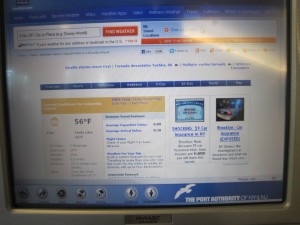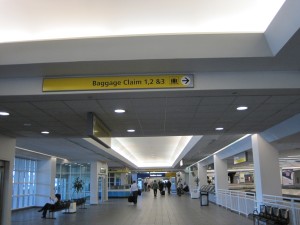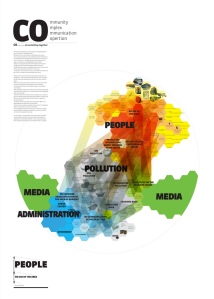Art is about self-expression, Design is self less. – Jeff Harris.
They are the steps to be followed by brainstorming, collaborating and organizing data. It is the execution of tasks to accomplish a well detail design that can fulfill the requirements of reaching the audience based on the business strategy of the client. Even though neither there is no set nor a unique rule to accomplish the goal.
Information Design Process is divided as it follows:
- Discovery
- Content/Analysis
- Personas and Scenarios
- Testing
Discovery: It is vital to get acquainted with the client as much as possible. It is important to find out the client’s previous projects. Since most designs are very much related to the client’s background. It is also a must to make and maintain good alleys within the client organization so; the designing team may feel very comfortable getting the proper information that will enable them to develop the right project according to the client’s audience needs.
This is the first step to developing a design and probably the most important. It is unlikely to come up with a good plan when the designing team ignores completely that client organization they will be working with. Once a plan such an outline acknowledging the role and responsibility of each member of them is in develop, it is easier to maintain a direction towards a particular goal. In other words, it is the foundation to the process of Information Design
Content/ Analysis: This is a very crucial step. Design and content continually inform each other. If possible, a designer must help the client come up with the right content. It is not unlikely for Information Designer to be part of developing content. Some clients bring their own content however; if the Designer has a problem reading it and or trying to understand, there is a good chance the audience may do as well.
Once the designer receives the data, the solution to the problem begins to develop. The designer must ensure the tone of the content is the appropriate one to reach the audience. It is common to use plain language which will benefit the readers of the content. Plain Language is displayed in short sentences. It is easy an effective way to communicate ideas to the audience. It is also important to review the content. A designer may try to compare it to the competition’s content. It may help to analyze previous projects developed for the client. A designer must analyze what the goal is and what to archive.
Creative Brief will ensure everyone is on the same page that includes not only the designing team but the client’s one as well. Creative Brief will help the designing team come up with new ideas that will make the developing process smooth.
Personas and Scenarios: I think this is an essential part of the process. Personas are fictional. In other words, it is the creation of a user profile that has desires, needs, habits and capabilities. It is a must to target an audience before putting it into practice. This will give the designer the power to acknowledge the audience needs.
Creating personas is a difficult process. It requires detailed process and validation. The designer needs to define his main audience. Then, create short list of specifications for the audience type. For example, age, gender, profession, education and such. Personas can be very useful when it comes to choosing the right designing approach.
Scenarios are detailed descriptions of what the site will do from the user’s perspective. Scenarios help you to identify specific ways how users interact with information design.
It could be a scenario how users interact with a specific web site. Scenarios could be specific or brief depending on complexity of the project.
Testing: Apparently, this should be the last part of the process. However; it is encouraged to test early in the process to avoid pitfalls that may arise at the end of the process. It is must to make the client understand that testing is part of the process. Testing is going to save money and time in a long run. Prototypes such a site map and blueprint are two of the structural overviews. Site map is the architectural development of the design such as website, brochure etc. Blueprint is likely to be the content to be displayed on the design. It is ok to test the site map and or the blueprint. It shouldn’t be a surprise to come up with new fresh arrangement of the design and or developing new ideas. It is usually ok to test unlikely and new approaches. Prototypes must look enough to the final project. It is a challenge to find the right balance so the testers may not confuse it with the final look and feel project. The client will provide people to test the prototypes also.
Conclusion: Every step in the process of Information Design is very important. The process varies according to the design project since every project is different. I think the first part of the process, Discovery and or getting to know the client’s organization is the foundation to develop a strategy and or plan to satisfy the client goals.
Ignoring the client’s business may unable designers to prepare a plan. Without a plan, it is really difficult to develop a good design. One may end up putting all effort towards the wrong direction. It is a waste of time and money. Let’s remember that this type of work is based on tight deadlines and budget. If there is no plan, it is even harder to find out where the content will be placed and so on. How would anyone find any job if he doesn’t know where apply? How would you know what your career path is if you don’t know what you want to be?
Discovery will give designers the push and or the inspiration they may need to go on in a project.
FYI, here is a Website Process Design.
Sources: Baer, Kim. Information Design Workbook: Graphic Approaches, Solutions, and Inspirations + 30 Case Studies. Rockport Pub, 2010. Print.




















